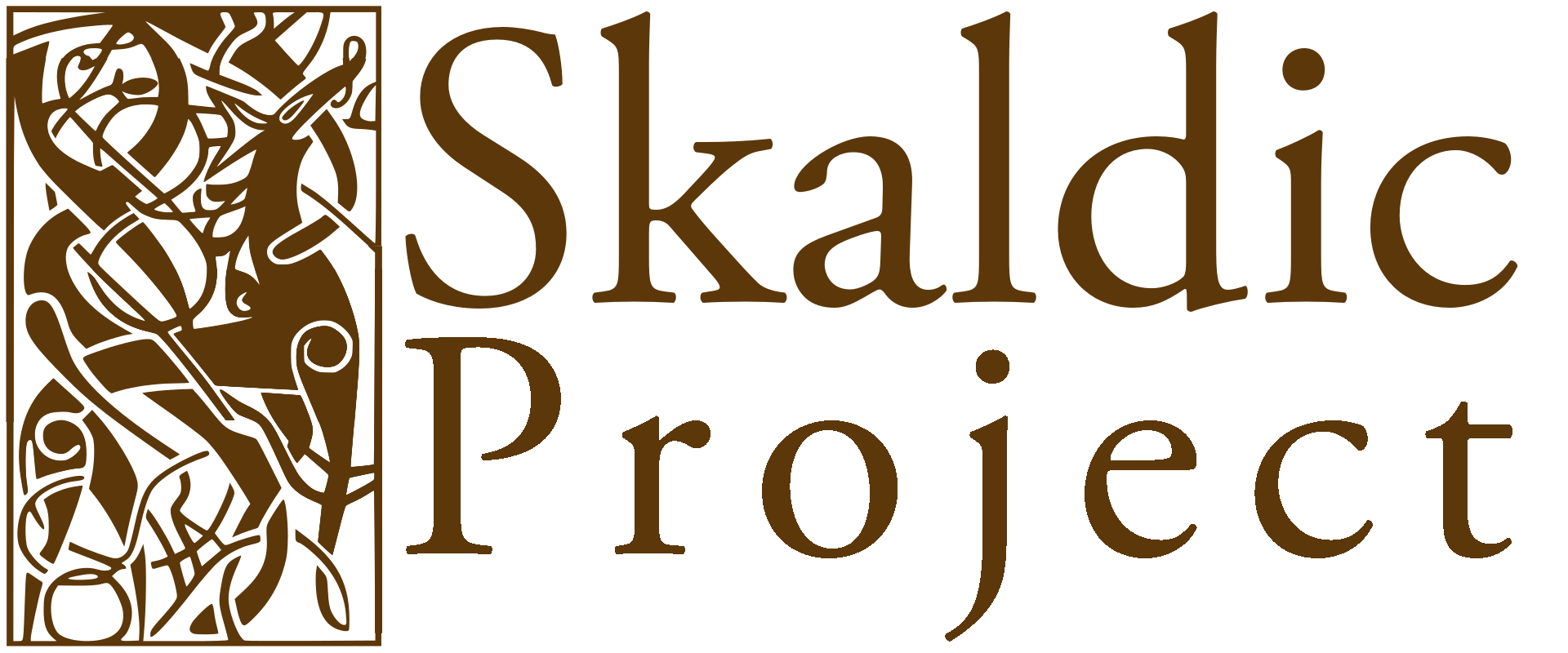Anon Pét 27VII/2 — sannaz ‘he is proven’
Pétrus princeps heitir
postulanna — sannaz
‘Céphás’, þýðiz þvísa
það nafn eða ‘steinn’ — jafnan.
Sælan * sunnu deilir
siðspenni kvað þenna
mest fyr tólf, þá er treysta
trú verk, hluti sterka.
Pétrus heitir jafnan princeps postulanna; sannaz ‘Céphás’, það nafn þýðiz þvísa eða ‘steinn’. Deilir sunnu * kvað þenna siðspenni sælan mest fyr tólf sterka hluti, þá er treysta trú verk.
Peter is always called the prince of Apostles; he is proven [to be] ‘Cephas’, that name is interpreted in this way or ‘stone’. The ruler of the sun [= God (= Christ)] said that this virtue-clasper [APOSTLE] was blessed most for twelve strong things which bolster faithful deeds.
notes
[2]: The line is unmetrical unless we assume that <u> was pronounced [u:], which is possible. — [2-3] sannaz ‘Céphás’ ‘he is proven [to be] “Cephas”’: Cf. John I.42: tu vocaberis Cephas quod interpretatur Petrus ‘thou shalt be called Cephas, which is interpreted Peter’; Pétr 2/21-30: Sem Jesus sa hann, tok hann sva til orða: ‘þu ert Simon Johannis son, þu kallaz Cephas, þat þyðiz Petrus.’ ... þat er kunnigt, at Simon þyðiz hlyðinn, en Petrus ok Cephas þyðiz steinn; Cephas þyðiz ok ho᷎fuð at so᷎gn Ysidori byskups, ok heyra þessar allar merkingar storliga vel sælum Petro. En þat truiz, at þa hafi varr herra honum fastliga Petrs nafn gefit, er hann skipaði hann fyrstan i tolu .xii. postola. ‘When Jesus saw him, he began to speak these words: “Thou art Simon the son of John, thou art called Cephas, which is translated Petrus.” ... That is well known, that Simon is translated “obedient”, and Petrus and Cephas are translated “stone”. Cephas is also translated “head” according to the report of bishop Isidore, and all these meanings belong exceedingly well to the blessed Peter. But that is believed, that our Lord gave him the name of Peter permanently, when he placed him first in the number of the twelve Apostles.’ Cf. Isidore, Etym., 7.9.3: Cephas dictus eo quod in capite sit constitutus Apostolorum; κεφαλή enim Graece caput dicitur et ipsud nomen in Petro Syrum est. ‘He is called Cephas because he is placed as the head of the Apostles: for the head is called κεφαλή in Greek and the same name for Peter is Syrian.’ Finnur Jónsson (Skj B) interprets ms. sannaz as sannast, superlative n. nom./acc. sg. of sannr used adverbially: sandest tolkes det navn ved ‘Kefas’ eller ‘sten’ ‘most truly that name is interpreted “Kefas” or “stone”’. But this paraphrase does not deal with þvísa (= þessu) (l. 3). Sannaz is taken here as refl. 3rd pers. sg. pres. indic. of sanna: ‘he is proven [to be] “Cephas” (i.e. head, leader)’.
